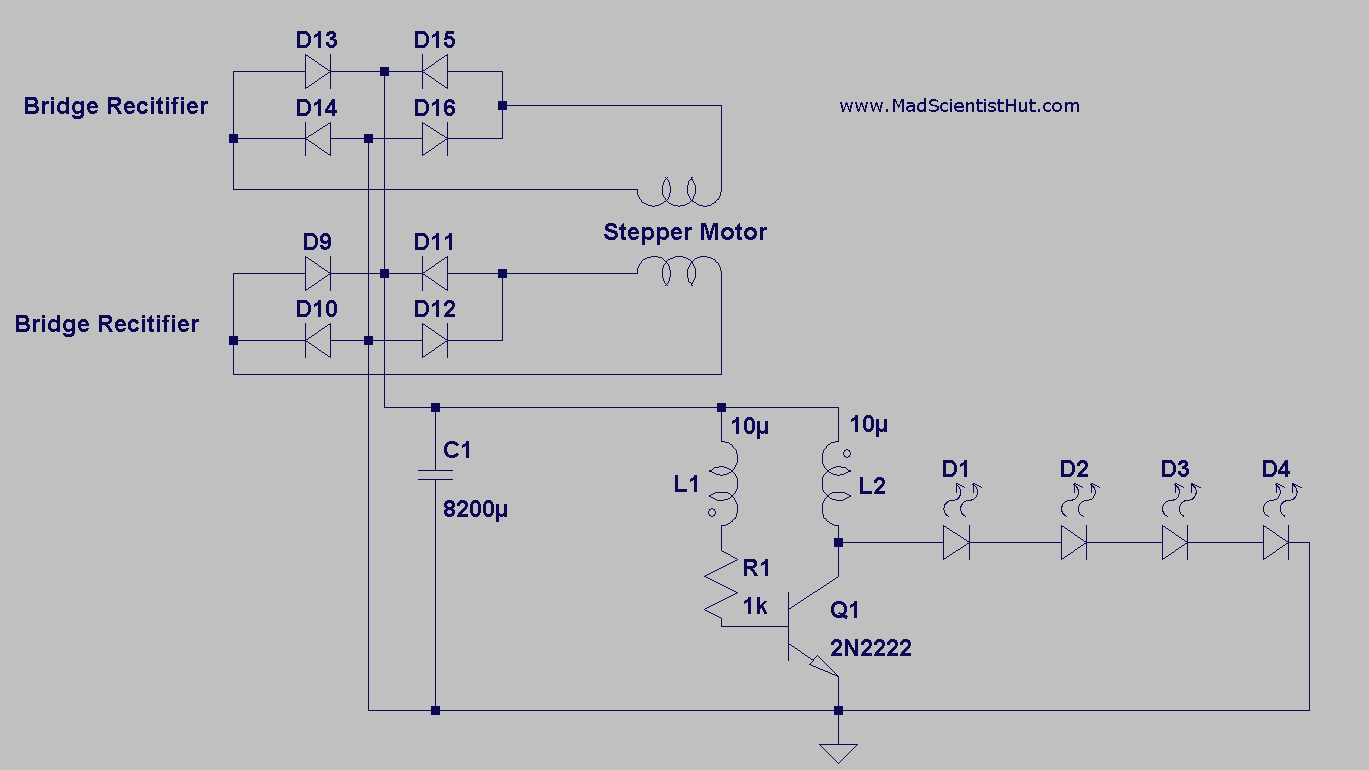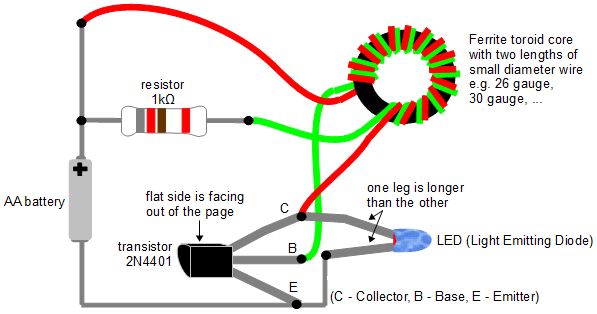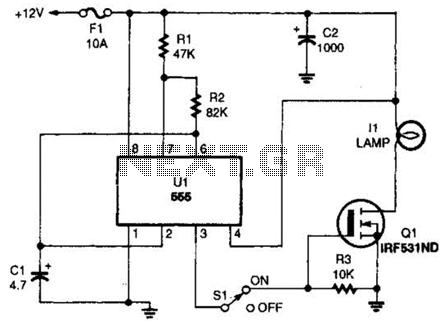
Joule Thief Circuit Kit

A steam engine powered carousel project that utilizes the Joule Thief circuit.
The project involves the design and construction of a carousel that is powered by a steam engine, showcasing the principles of mechanical motion and energy conversion. The Joule Thief circuit, a simple and effective boost converter, is integrated into the system to optimize the energy usage from low-voltage sources, such as batteries or capacitors.
The steam engine serves as the primary power source, converting thermal energy into mechanical energy to drive the carousel's rotation. The Joule Thief circuit enhances the efficiency of the power supply by allowing the system to operate effectively even with minimal voltage. This circuit typically consists of a transistor, a transformer, and a few passive components, which work together to step up the voltage from the energy source to a level suitable for the operation of the carousel's motor.
In the schematic, the steam engine is connected to a mechanical linkage that drives the carousel, while the Joule Thief circuit is connected to a low-voltage power source. The output of the Joule Thief is then fed into a small DC motor that powers the carousel. The design can be further enhanced with additional features such as LED lighting or sound effects, which can be powered by the same energy source, showcasing the versatility of the Joule Thief in powering multiple components within the project.
Overall, this project exemplifies the integration of classical engineering principles with modern electronic circuits, providing an educational platform for exploring steam power and energy efficiency.A Very Nice Steam Engine Powered Carousel Project That Uses The Joule Thief 🔗 External reference
The project involves the design and construction of a carousel that is powered by a steam engine, showcasing the principles of mechanical motion and energy conversion. The Joule Thief circuit, a simple and effective boost converter, is integrated into the system to optimize the energy usage from low-voltage sources, such as batteries or capacitors.
The steam engine serves as the primary power source, converting thermal energy into mechanical energy to drive the carousel's rotation. The Joule Thief circuit enhances the efficiency of the power supply by allowing the system to operate effectively even with minimal voltage. This circuit typically consists of a transistor, a transformer, and a few passive components, which work together to step up the voltage from the energy source to a level suitable for the operation of the carousel's motor.
In the schematic, the steam engine is connected to a mechanical linkage that drives the carousel, while the Joule Thief circuit is connected to a low-voltage power source. The output of the Joule Thief is then fed into a small DC motor that powers the carousel. The design can be further enhanced with additional features such as LED lighting or sound effects, which can be powered by the same energy source, showcasing the versatility of the Joule Thief in powering multiple components within the project.
Overall, this project exemplifies the integration of classical engineering principles with modern electronic circuits, providing an educational platform for exploring steam power and energy efficiency.A Very Nice Steam Engine Powered Carousel Project That Uses The Joule Thief 🔗 External reference





